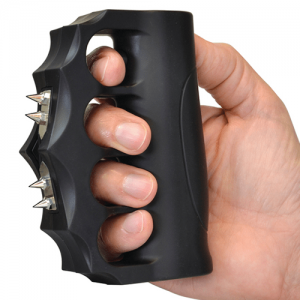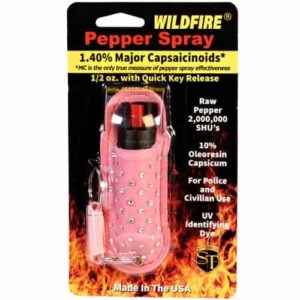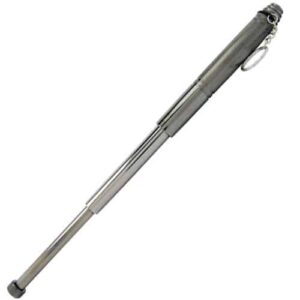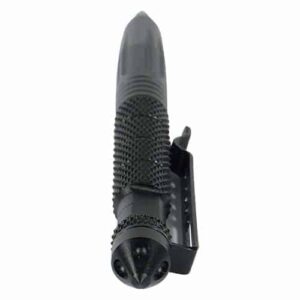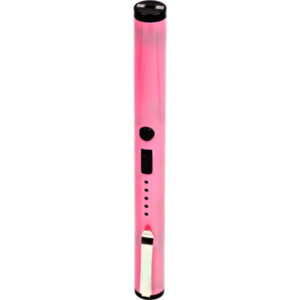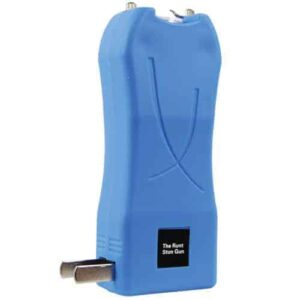In “pepper spray And Taser”, you will uncover the fascinating details and safety features of two of the most common non-lethal self-defense tools. This article offers detailed insight into how pepper spray and tasers work, their effects on an attacker, safe usage methods, and the legal aspects related to their possession and use. Get ready to broaden your understanding about these essential tools that are being utilized by both law enforcement and civilians around the world for personal safety.

Table of Contents
ToggleOverview of Pepper Spray and Taser
As you navigate an ever-changing world, you might find yourself considering the various options available for personal safety. Two common self-defense tools you may come across are pepper spray and the Taser, both of which have unique properties and purposes.
What is Pepper Spray?
pepper spray is a self-defense tool designed to cause extreme irritation and temporary blindness when sprayed in an attacker’s face. It involves an active ingredient called capsaicin, which is derived from chili peppers. It comes in a pocket-sized canister that can be easily concealed, making it a popular choice for personal safety.
What is a Taser?
A Taser, on the other hand, is a conducted electrical weapon that disrupts muscle function by sending high-voltage electricity into a target’s body. It’s typically used by law enforcement as a non-lethal tool to subdue individuals, but smaller versions are also available for personal use.
Key Differences between Pepper Spray and Taser
While both pepper spray and tasers offer personal protection, their modes of operation are notably different. Pepper sprays incapacitate an attacker through chemical reactions, causing severe discomfort, while a Taser uses electricity to disrupt muscle control. The range, effectiveness, legality, costs, and user safety also vary considerably between the two devices.
Pepper Spray
Composition of Pepper Spray
Pepper spray consists of a base of water, oil, or alcohol, mixed with an active compound called capsaicin. This compound, derived from hot chili peppers, is capable of inducing intense burning sensations when it comes into contact with skin or eyes.
Types of Pepper Spray
Several types of pepper spray are available, distinguished primarily by their delivery methods. The most common types include stream, fog, foam, and gel, each with different ranges, effects, and suitability for different scenarios.
How Pepper Spray Works
Once sprayed, pepper spray inflames the mucous membranes of the eyes, nose, throat, and lungs, causing an immediate reaction. The eyes involuntarily close due to intense burning, and other effects include coughing, difficulty breathing, nausea, and even temporary blindness.
Effectiveness of Pepper Spray
The effectiveness of pepper spray depends on numerous factors like the strength of the solution, the accuracy of the spray, and the wind direction. Generally, it can be a very effective deterrent, causing extreme discomfort and temporary incapacitation of an attacker.
Usage and Application of Pepper Spray
When using pepper spray, aim for the attacker’s face and spray in a sweeping motion. It’s crucial to factor in the direction of the wind to avoid self-contamination. It is typically used in close-quarter situations.
Safety Precautions and Legal Considerations
While generally considered safe for use, pepper spray can cause severe allergic reactions in some cases. It’s also essential to respect the legal constraints regarding its usage and possession, which may vary from region to region.
Taser
How Does a Taser Work?
A Taser works by firing two small dart-like electrodes connected by conductive wire to deliver an electric current. This current interferes with the communication between the brain and the muscles, causing an immediate loss of the person’s neuromuscular control and the capacity to perform coordinated actions.
Different Types of Tasers
Several models of Tasers are available, generally categorized by their intended users (law enforcement or civilians). Some common types include the Taser X2, Taser X26P, and the Taser Pulse+, each with different features and capabilities.
Effectiveness of Tasers
Tasers are generally highly effective in immobilizing an individual, with the ability to penetrate clothing. Their effectiveness can be influenced by factors like aim, proximity, and the target’s size.
Usage and Application of Tasers
Tasers are a good choice for self-defense situations where a safe distance can be maintained from the attacker. When using a Taser, aim for the center mass of the body and avoid sensitive areas like the head and groin.
Safety Precactions and Legal Considerations
Use of a Taser can lead to serious injuries or even death, especially if used incorrectly or on individuals with pre-existing health conditions. As for legality, rules vary by region and it’s crucial to understand your local regulations before purchasing or using a Taser.
Comparing Pepper Spray and Taser
Range and Reach
Pepper spray typically has a range of up to 10 feet, whereas a Taser can reach up to 15 feet. This makes a Taser potentially more effective in scenarios that allow you to maintain a safe distance.
Effectiveness Against Different Scenarios
Both tools are effective in different scenarios, with pepper spray being a good choice in close-quarters situations, and a Taser being helpful when you can maintain distance.
Psychological and Physiological Impact
The psychological effects of these tools can be significant, as they can act as deterrents to potential attackers. Their physiological impact is also notable, with both capable of incapacitating individuals temporarily.
Ease of Use and Training Required
Pepper spray is relatively easy to use, while Tasers typically require training for effective and safe usage.
Legal Restrictions and Regulations
Legalities vary significantly by location for both pepper spray and Tasers, so it’s important to research local laws.
Cost Comparison
Generally, pepper spray is less expensive than a Taser, which is a considerable factor for many individuals.

Safety Considerations
Potential Health Risks and Side Effects
Both pepper spray and Tasers come with potential health risks and side effects. These could range from temporary discomfort to more serious implications such as allergic reactions or in rare cases, death due to TASER-induced cardiac arrest.
Proper Usage and Storage
Proper usage and storage are crucial for both pepper spray and Tasers to ensure they function effectively and safely.
Awareness about Allergic Reactions
An allergic reaction to pepper spray is rare but possible, so consider seeking medical attention if severe reactions occur.
Risk Mitigation Strategies
Proper understanding, respect for legality, and trained usage can greatly mitigate the risks associated with both tools.
Impact on Vulnerable Populations
Both pepper spray and Tasers can have amplified effects on vulnerable populations such as individuals with pre-existing health conditions, pregnant women, and the elderly.
Choosing the Right Option
Understanding Personal Safety Needs
Choosing between a Taser and pepper spray should be based on your personal safety needs, considering factors like your environment and capability.
Legal Constraints and Local Regulations
It’s essential to understand the legal constraints and regulations that apply where you live before choosing a protection tool.
Training and Familiarity
It’s also important to consider how much training and familiarity you are willing to invest in using your chosen self-defense tool effectively.
Consideration of Personal Comfort and Preference
Your comfort and ease with the chosen tool significantly contribute to its effectiveness.
Consultation with Security Professionals
If in doubt, consult with security professionals who can offer advice based on their extensive industry knowledge and experience.

Controversies and Debates
Ethical Concerns
There are ethical concerns around the use of pepper spray and Tasers, especially around potential misuse and the possibility of causing unnecessary harm.
Misuse and Abuse of Pepper Spray and Tasers
Cases of misuse and abuse have raised concerns about the unregulated usage of these tools.
Public Perception and Media Influence
Public perception of pepper spray and Tasers is often influenced by media coverage, which can contribute to misinterpretations and misconceptions about their usage.
Calls for Regulations and Reform
As a result of the above issues, several groups and individuals continue to push for more stringent regulations and reform.
Alternatives to Pepper Spray and Taser
Personal Alarm Systems
Personal alarm systems are an alternative that can draw attention to a situation and potentially deter an attacker.
Stun Guns
Stun guns serve a similar purpose to Tasers but operate slightly differently.
Self-Defense Classes
Learning self-defense techniques is another effective method of ensuring personal safety.
Non-Lethal Weapons and Deterrents
Other non-lethal options include tear gas, batons, and personal whistles.

Conclusion
Understanding the Pros and Cons
To make the best decision, weigh the pros and cons of pepper spray and Tasers in relation to your specific needs and circumstances.
Making an Informed Decision
Being knowledgeable and informed can help you make a decision that best serves your safety needs.
Balancing Personal and Public Safety
Ultimately, your choice should balance personal safety with the well-being of the public and should be used responsibly.



